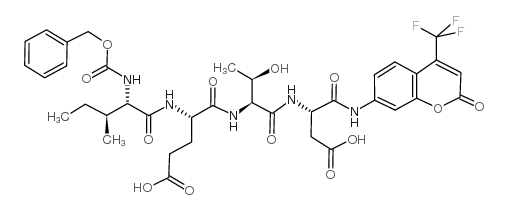| 结构式 | 名称/CAS号 | 全部文献 |
|---|---|---|
 |
Z-异亮氨酰-谷氨酰-苏氨酰-天冬氨酸-AFC
CAS:219138-02-0 |
| 结构式 | 名称/CAS号 | 全部文献 |
|---|---|---|
 |
Z-异亮氨酰-谷氨酰-苏氨酰-天冬氨酸-AFC
CAS:219138-02-0 |